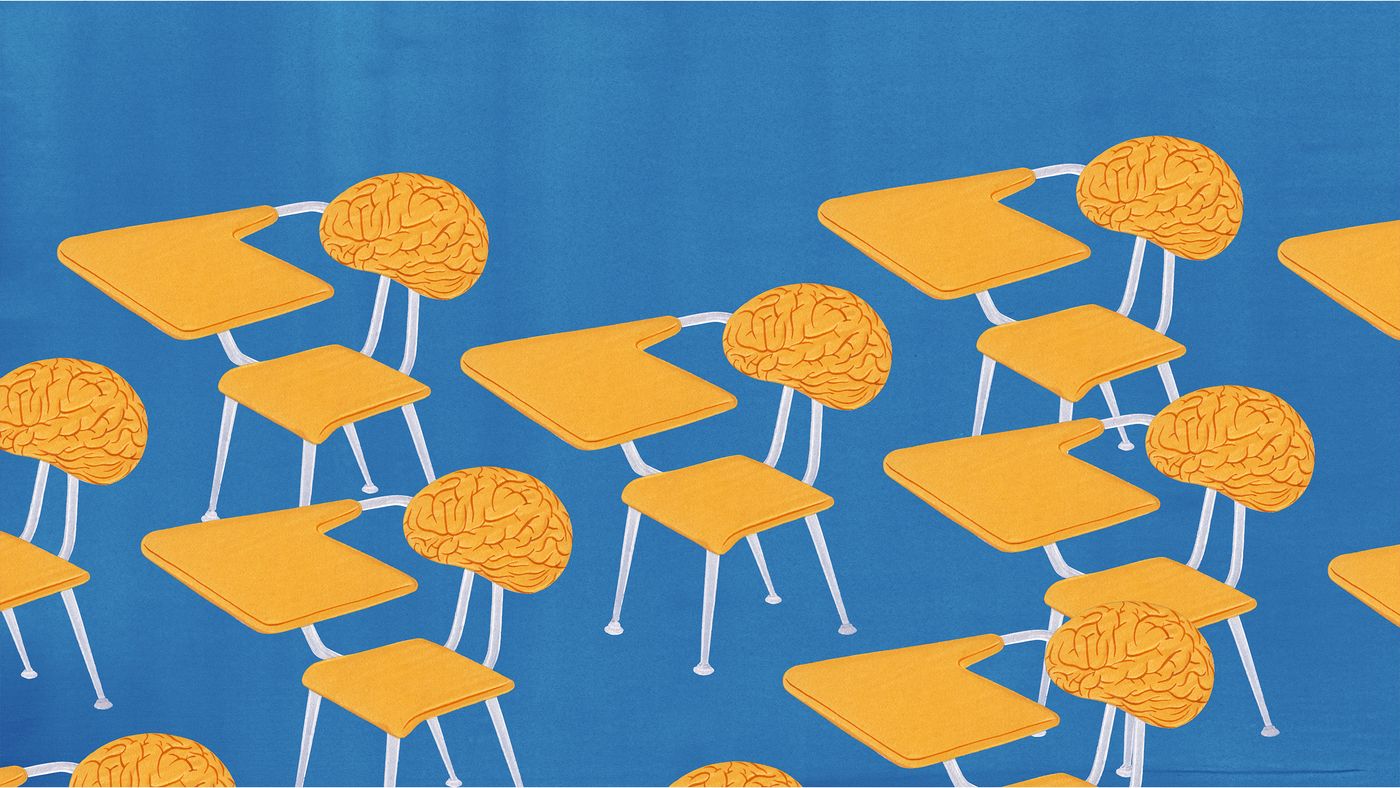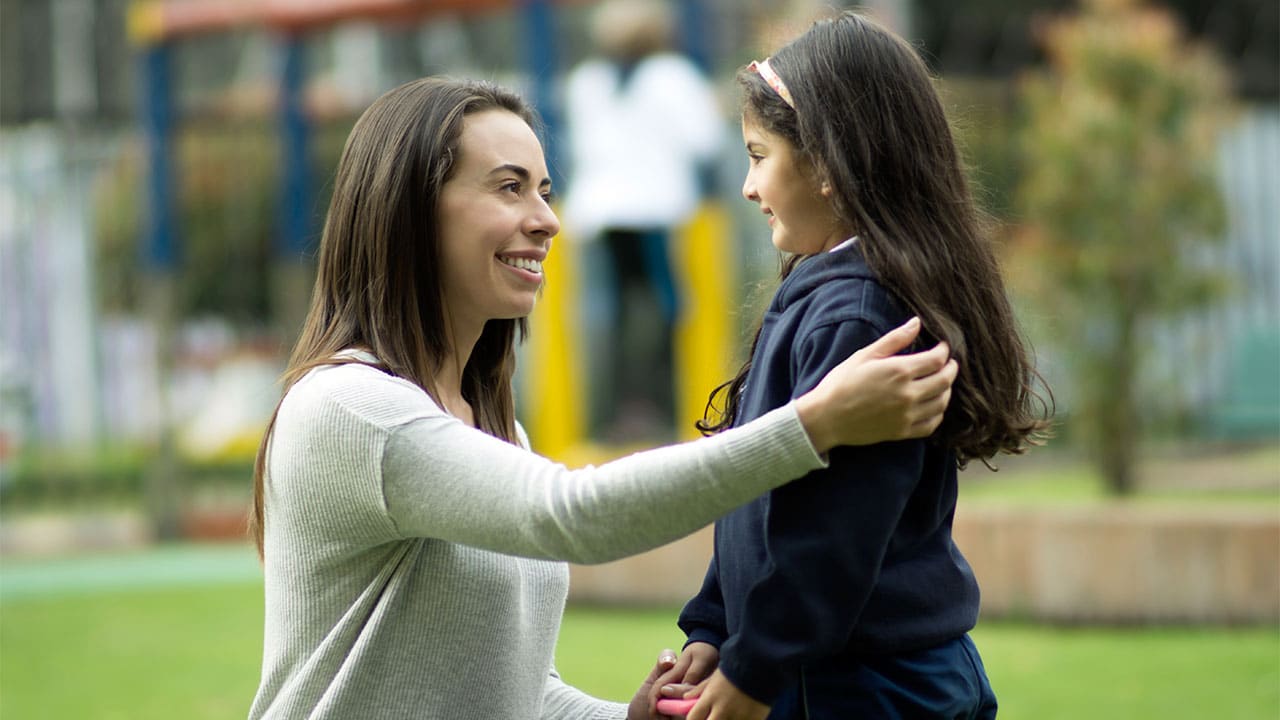ครูสามารถช่วยนักเรียนในการจดจำบทเรียนในความจำระยะยาวได้อย่างมากโดยต้องเข้าใจว่ามนุษย์จัดเก็บและใช้ข้อมูลอย่างไร ความจำของมนุษย์เป็นหนึ่งในส่วนที่สำคัญที่สุดแต่เข้าใจได้น้อยที่สุดในการเรียนรู้ เป็นหน้าที่ของเราในการถ่ายทอดความรู้และทักษะให้กับนักเรียน ซึ่งถือเป็นส่วนที่สำคัญที่สุดในการทำงานของเรา อย่างไรก็ตาม ครูจำนวนกี่คนที่มีปริญญาและใบรับรองการสอนโดยไม่พูดถึงการทำงานของความจำ การอภิปรายหนังสือหรือเซสชันการพัฒนาวิชาชีพมักเน้นที่ความจำของมนุษย์บ่อยเพียงใด ฉันสำเร็จการศึกษาด้วยปริญญาการสอนเมื่อ 15 ปีที่แล้ว แต่จำไม่ได้ว่าเคยเรียนหลักสูตรเกี่ยวกับเรื่องนี้เลย ฉันแทบจะไม่ได้รับการพัฒนาวิชาชีพในหัวข้อความจำเลย หรือฉันต้องค้นหาด้วยตัวเอง
ฉันไม่รู้จักครูคนไหนเลยที่ไม่ต้องการให้ลูกศิษย์ของตนได้รับสิ่งที่ดีที่สุด และการจัดการเรียนการสอนและสภาพแวดล้อมการเรียนรู้ที่มีประสิทธิภาพและประสิทธิผลสำหรับการเรียนรู้ต้องอาศัยความรู้เกี่ยวกับกระบวนการจดจำและความเข้าใจพื้นฐานเกี่ยวกับวิธีการทำงานภายในขีดจำกัดของความจำของมนุษย์ ดังนั้น นักการศึกษาจำเป็นต้องเข้าใจอะไรเกี่ยวกับความจำ?
ช่วยเหลือนักเรียนในการถ่ายโอนความรู้ของพวกเขาไปยังหน่วยความจำระยะยาว
ความรู้สึกและความจำทางประสาทสัมผัส: แม้ว่าอาจดูเหมือนเป็นเรื่องสัญชาตญาณ แต่ก่อนอื่นนักเรียนต้องรับรู้เนื้อหาก่อนจึงจะจำได้ ซึ่งโดยปกติแล้วหมายถึงการได้เห็นและ/หรือได้ยินข้อมูลในห้องเรียน แม้ว่าจะเป็นขั้นตอนเริ่มต้นที่สำคัญ แต่ก็เป็นเพียงขั้นตอนชั่วคราวเท่านั้น ตัวอย่างเช่น ขณะนี้คุณกำลังรับรู้ข้อมูลจำนวนมาก ในทางปฏิบัติ ครูต้องจัดห้องเรียนให้เรียบง่ายที่สุดเท่าที่จะเป็นไปได้เพื่อให้นักเรียนรับรู้ข้อมูลได้ ฉันให้เด็กนักเรียนทั้งหมดหันหน้าไปทางด้านหน้าห้องเรียน ซึ่งเป็นที่ที่นักเรียนได้รับความรู้เป็นส่วนใหญ่ แม้ว่าจะไม่ใช่แนวทางปฏิบัติทางการศึกษาทั่วไปในปัจจุบันก็ตาม วิธีนี้ช่วยเพิ่มโอกาสที่พวกเขาจะรับรู้ข้อมูลที่ต้องการด้วยสายตา
สิ่งนี้ทำให้เราสนใจ ความจำจะไร้ประโยชน์หากนักเรียนไม่ใส่ใจความรู้สึกเหล่านั้น นี่คือการมีส่วนร่วม ตามคำฮิตจากโลกแห่งการศึกษา สมองมุ่งเน้นไปที่การมีส่วนร่วม เป็นการกระทำทางปัญญา ซึ่งเห็นได้ชัดว่ามีความสำคัญอย่างยิ่งในแง่ของการเรียนรู้ นักเรียนมีโอกาสที่จะเรียนรู้ทุกที่ที่พวกเขาให้ความสนใจ เป็นการจดจ่ออยู่กับหน้าจอโทรศัพท์หรือการกระตุ้นที่จำเป็นสำหรับการเรียนรู้หรือไม่ หรือแบ่งออกเป็นความรู้สึกต่างๆ มากมาย?
ฉันพยายามทำให้เด็กๆ มีสมาธิกับสิ่งที่สำคัญที่สุดสำหรับการเรียนรู้ในห้องเรียนของฉันให้มากที่สุด ซึ่งหมายความว่าฉันพยายามทำให้สภาพแวดล้อมไม่มีสิ่งรบกวนสมาธิมากที่สุด โดยคำนึงถึงเครื่องมือที่เด็กๆ อาจมีบนโต๊ะ งานศิลปะที่ฉันแขวนไว้บนผนัง วิธีที่ฉันนำเสนอข้อมูลในลักษณะที่ชัดเจนและกระชับ และการจัดวางโต๊ะและเก้าอี้อย่างเหมาะสม
หน่วยความจำทำงาน: ข้อมูลสามารถเข้าใจและเก็บไว้ในหน่วยความจำการทำงานได้หากนักเรียนใส่ใจและรับรู้เนื้อหาการเรียนรู้ พูดง่ายๆ ก็คือ ข้อมูลที่คุณกำลังใช้งานอยู่ในหน่วยความจำการทำงานของคุณในขณะนี้คือสิ่งที่คุณกำลังคิดอย่างมีสติในขณะนี้ แต่เราจะเห็นว่าแม้ว่านี่จะเป็นขั้นตอนที่จำเป็นมาก แต่ก็ไม่เพียงพอสำหรับการเก็บรักษาเนื้อหาในระยะยาว หน่วยความจำการทำงานนั้นค่อนข้างจะเลือนลางทั้งในความสามารถในการประมวลผลข้อมูลในเวลาที่กำหนดและระยะเวลาที่ข้อมูลนั้นจะเก็บไว้โดยไม่ต้องทบทวน ในระดับหนึ่ง หน่วยความจำการทำงานก็เหมือนกับช่องทางสำหรับข้อมูล—เนื้อหาสามารถผ่านเข้ามาได้เพียงบางส่วนเท่านั้นโดยไม่สูญหาย ดังนั้นจึงจำเป็นที่ครูจะต้องตรวจสอบความซับซ้อนทางปัญญาของห้องเรียนและบทเรียนที่เราออกแบบอย่างระมัดระวัง
ตัวอย่างเช่น ในห้องเรียนของฉัน นั่นหมายความว่าต้องยึดถือสิ่งสำคัญเป็นหลัก นั่นคือสิ่งที่จำเป็นอย่างยิ่งสำหรับนักเรียนของฉันที่จะต้องเผชิญและเข้าใจเพื่อการเรียนรู้ ในส่วนใหญ่ ทุกสิ่งที่นักเรียนของเราให้ความสนใจและมีส่วนร่วมจะส่งผลต่อหน่วยความจำในการทำงานของพวกเขา หากการออกแบบการเรียนการสอนมีความซับซ้อนเกินไป หรือไม่ชัดเจนเพียงพอว่านักเรียนควรเน้นที่อะไร พวกเขาอาจไม่มีที่ว่างในหน่วยความจำในการทำงานสำหรับการกระตุ้นที่จำเป็นสำหรับการประมวลผล เนื่องจากพวกเขากำลังเน้นไปที่ข้อมูลที่ไม่ถูกต้อง การออกแบบการเรียนการสอนควรเรียบง่าย โดยเฉพาะอย่างยิ่งสำหรับเนื้อหาใหม่และ/หรือซับซ้อน
ฉันไม่ได้บอกว่าห้องเรียนและบทเรียนควรจะน่าเบื่อจนน่าหดหู่ แต่ทุกครั้งที่นักเรียนเจอข้อมูล แผนภาพ หรือเครื่องมือใหม่ๆ ภาระงานของหน่วยความจำในการทำงานที่จำกัดก็จะเพิ่มมากขึ้น เลือกอย่างชาญฉลาด
หน่วยความจำระยะยาว: เท่าที่เรารู้ หน่วยความจำระยะยาวนั้นไม่มีขีดจำกัดทั้งในด้านความจุและระยะเวลาที่สามารถเก็บความทรงจำไว้ได้ ในทางปฏิบัติแล้ว เป้าหมายของผู้สอนก็คือการนำข้อมูลที่เกี่ยวข้องเข้าสู่หน่วยความจำระยะยาวของนักเรียน แม้ว่าจะเป็นเรื่องดีหากหน่วยความจำของเนื้อหาในห้องเรียนได้รับการประมวลผลโดยอัตโนมัติไปยังหน่วยความจำระยะยาว แต่โดยปกติแล้วจะไม่เป็นเช่นนั้น สำหรับข้อมูลการเรียนการสอนส่วนใหญ่ การประมวลผลดังกล่าวต้องใช้ความพยายามอย่างมาก
กลยุทธ์การเรียนรู้ตามหลักฐานที่ดีที่สุดสองประการสำหรับเรื่องนี้คือการฝึกเรียกคืนความรู้และการฝึกแบบเว้นระยะ เทคนิคเหล่านี้เรียกร้องให้ผู้เรียนใช้และประยุกต์ใช้ความรู้ของตนอย่างแข็งขันในจุดต่างๆ และอ้างอิงถึงความจำของตนเกี่ยวกับเนื้อหาวิชานั้น สิ่งนี้มีความน่าสนใจเป็นพิเศษเนื่องจากความจำของผู้เรียนอยู่ในหน่วยความจำการทำงานเมื่อพวกเขาจำมันได้
โดยทั่วไป ความสามารถในการจดจำหรือเรียกคืนข้อมูลจะแข็งแกร่งและมีประสิทธิภาพมากขึ้นเมื่อเราฝึกฝนมากขึ้น แม้ว่าข้อมูลบางอย่างอาจถูกเก็บไว้ในหน่วยความจำระยะยาวของนักเรียนและถูกจดจำไว้ทุกวัน แต่ก็ไม่ได้รับประกันว่าข้อมูลนั้นจะอยู่ในนั้นตลอดไป ความทรงจำที่ไม่ได้ใช้ก็อาจสูญหายหรือไม่สามารถกู้คืนได้ จำเป็นอย่างยิ่งที่จะต้องฝึกฝนการใช้ข้อมูลเพื่อประเมินการเรียนรู้และเพื่อการเรียนรู้ รับตารางเรียนที่ยืดหยุ่นพร้อมบทเรียนส่วนตัวที่ปรับแต่งให้เหมาะกับความต้องการในการเรียนรู้ของคุณ เชื่อมต่อกับผู้สอนและผู้ให้คะแนนระดับแนวหน้าจากหลักสูตรนานาชาติและมหาวิทยาลัยได้ที่นี่วันนี้
ตรวจสอบเราที่ www.tigercampus.com.my
ลงทะเบียนทดลองใช้งานฟรีวันนี้!: https://www.tigercampus.com.my/free-trial/
ติดต่อเราทาง Whatsapp เพื่อสอบถามข้อมูลได้ทันที: +60125022560 https://wa.link/ptaeb1








